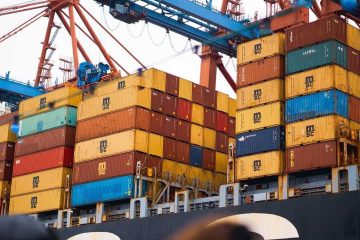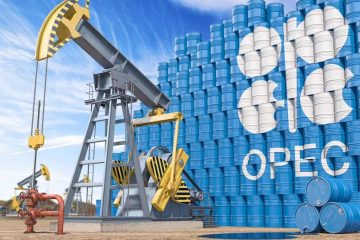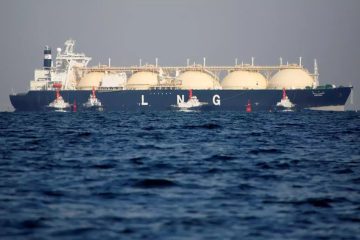Countries are rushing to extract rare earth minerals

Despite the global rare earth elements (REE) market being relatively small, projected at $3.5 billion in 2024, countries are competing to secure reserves and establish domestic supply chains. Prices for key elements such as neodymium-praseodymium (NdPr) have experienced volatility and remain low, rendering purely commercial ventures unappealing without state support.
Governments consider rare earths essential for national security, as high-tech industries such as defense systems, wind turbines, EV motors, and consumer electronics depend on them. The Pentagon’s commitment includes a $400 million investment in MP Materials and a 10-year price-floor guarantee of $110 per kg for NdPr, nearly double the current rates, according to the Financial Times.
China’s ascent to dominance in rare earth processing developed due to its geological advantages and years of strategic planning. The country focused on mining and midstream refining from the 1980s onwards, leveraging massive ion-adsorption clay deposits that are easier and more affordable to extract and process. Deng Xiaoping stated in 1992: While there is oil in the Middle East, China has rare earths. That vision directed state-supported subsidies, relaxed environmental regulations, and vertical integration, spanning from mining to completed magnets. Currently, China holds 90-95 percent of the global capacity for refining and processing rare earth elements (REE).
Mining and refining REEs entails significant costs, environmental hazards, and technical challenges. Western firms departed in the early 2000s; notably, the US’s Mountain Pass mine closed in 2002 due to stricter environmental regulations. Processing facilities generate 2,000 tonnes of toxic and radioactive waste for every tonne of rare earths produced.
Mining and processing rare earths encounter three significant constraints –
- Low market value: The annual US import value is merely $200 million.
- Extreme pollution: Resulting from processing, generating toxic and radioactive waste.
- Low return on investment: Investments in mining hard rock and ionic clay are substantial yet result in narrow margins because of low prices.
Only China was willing to absorb these costs, given the tight margins and low prices. Western miners concentrated on extraction, yet they were deficient in downstream separation infrastructure.
In 2023, the United States imported around 400 tonnes of rare-earth metals, with a value of $22.1 million. Additionally, it imported approximately 10,530 tonnes of rare earth compounds, valued at $186 million, as reported by Statista and the World Integrated Trade Solution database. In 2024, US imports of rare earth compounds were approximately 10,530 tonnes, valued between $151.08 million and $170 million. Approximately 74.5 per cent of the imports by value originated from China. The European Union imported 18,300 tonnes of rare earth minerals, valued at 123.6 million, with China supplying 39 percent of the total volume. In 2024, imports into the EU fell significantly to 12,900 tonnes, marking a 29 per cent decrease, while China’s share increased to 46.3 per cent. Russia and Malaysia significantly contributed to Europe’s rare earth supply.
While trade values remain modest, the geopolitical stakes are significant. An F-35 jet, for example, contains hundreds of kilograms of rare earths. Export controls, exemplified by China’s 2023-24 restrictions on seven heavy REEs, illustrate the potential for supply to be weaponised. China has previously utilized these restrictions as well: In 2010, global prices surged significantly, prompting Japan to seek alternatives. Recent US-China tensions have seen similar patterns emerge.
State support is crucial to counterbalance the non-commercial aspects of rare earth refining. The Pentagon’s $400 million investment in US rare-earth materials firm MP Materials, along with a commitment to purchase 7,000 tonnes of magnets each year, ensures the company’s financial stability, as reported by the Financial Times. Apple has pledged as much as $500 million for upcoming magnet orders. The Pentagon will acquire a 15 percent equity stake in MP and guarantee a minimum floor price of $110 per kg for NdPr (neodymium-praseodymium). These policies seek to enhance magnet-grade rare earths production capacity, with Vietnam, Australia, and Canada taking similar steps.
The US is increasing domestic projects, including the MP Materials Fort Worth magnet plant and a second facility with a capacity of 10,000 tonnes per year, as reported by The Wall Street Journal. Meanwhile, the EU, Japan, France, and South Korea are financing new separation plants. India, with 6.9 million tonnes of REE reserves (third globally), has produced merely 2,900 tonnes annually from 2012 to 2024. However, it is now making significant investments in mining and refining partnerships via its National Critical Mineral Mission. Australia, Vietnam, Brazil, and emerging players such as Greenland are set to diversify the supply chain. However, most require 5-10 years and billions of dollars to develop complete processing capabilities.
Establishing comprehensive rare earth supply chains continues to be a lengthy, costly, and environmentally challenging process. Western nations encounter more stringent environmental regulations and increased energy expenses. Despite state support, achieving processing levels comparable to China’s may take five to ten years. Moreover, China’s capacity to offload excess production, which lowers prices and pressures new competitors, continues to be a significant obstacle. Without coordinated policies like guaranteed offtake, subsidies, and strategic reserves, Western producers will face challenges in competition.
REE trading produces modest revenue, yet its strategic value significantly surpasses market price. Governments are investing not to chase profits, but to mitigate geopolitical risk, secure defense-relevant supply, and support green-tech independence With the rising demand for high-performance magnets and essential defense components, nations will persist in their strategic endeavors despite low unit values. This pursuit transcends immediate profits, focusing instead on geopolitical insurance in a world increasingly characterized by high-tech competition and resource security.









